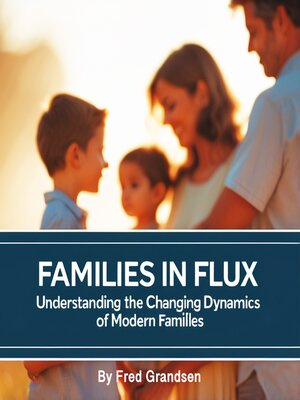Families in Flux
audiobook (Unabridged) ∣ Understanding the Changing Dynamics of Modern Families
By Fred Grandsen

Sign up to save your library
With an OverDrive account, you can save your favorite libraries for at-a-glance information about availability. Find out more about OverDrive accounts.
Find this title in Libby, the library reading app by OverDrive.



Search for a digital library with this title
Title found at these libraries:
| Library Name | Distance |
|---|---|
| Loading... |
Family structures have undergone significant transformations throughout history, reflecting broader social, cultural, and economic changes. Traditionally, families were centered around a nuclear model, consisting of two married parents and their children. This model was largely influenced by societal norms, religious beliefs, and economic factors that reinforced the idea of a stable, two-parent household as the foundation of society. Extended families, which included multiple generations living together, were also common in many cultures, serving as a source of emotional and financial support.
As societies industrialized, family structures began to shift. Urbanization and economic mobility led to a decline in multigenerational households, as people moved away from rural communities to seek employment in cities. The rise of women in the workforce also contributed to changes in family dynamics, as traditional gender roles evolved and dual-income households became more prevalent. These shifts challenged the notion of a single dominant family model and opened the door to more diverse structures, including single-parent families, cohabiting couples, and blended families.
In the late 20th and early 21st centuries, globalization, technological advancements, and changing social norms further reshaped family structures. Divorce rates increased, leading to a rise in single-parent and stepfamilies. Same-sex partnerships and marriages became more widely recognized, expanding definitions of what constitutes a family. Advances in reproductive technologies, such as in-vitro fertilization and surrogacy, also allowed individuals and couples to start families in new ways. These changes reflected a growing acceptance of diverse family models and a shift away from rigid definitions of family life.







